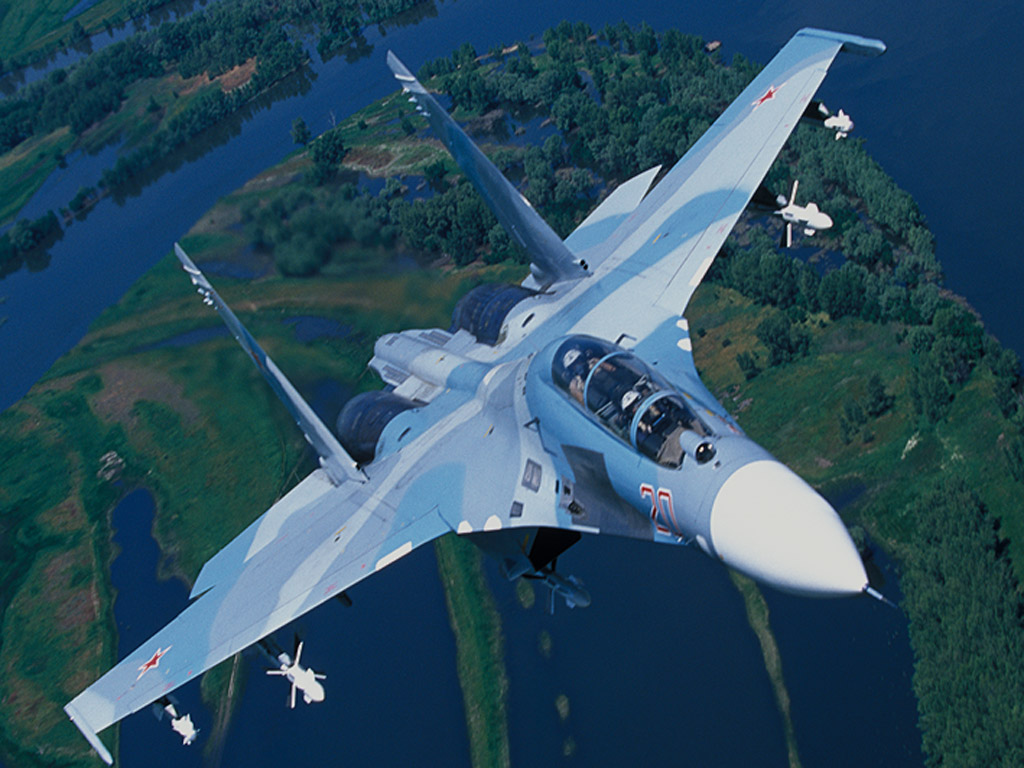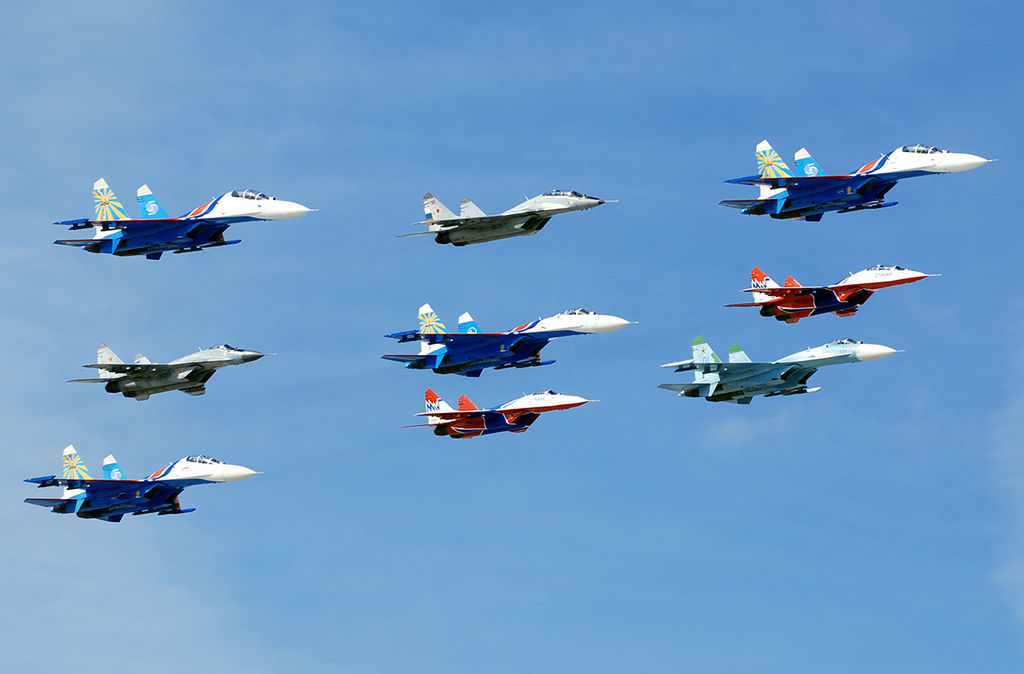The head of the then-Sukhoi OKB convinced the Russian Federation’s President to select his firm’s designs as the country’s principal fighter aircraft during negotiations with post-Soviet Russian President Yeltsin
Having grown up a military brat during the waning days of the First Cold War, naturally, I followed Aircraft development on both sides of the Iron Curtain from an early age. My fascination with flying machines was stoked by associating with Veteran Aviators from World War II, Korea, and Vietnam. Grandpa served in WW1 and 2, Dad in Vietnam, and my first Stepfather Jay LaRue served there at the same time my Dad was “in country.”
As a son of an Army Reserve Officer Dad, and a Marine Aviator Stepfather, I was steeped in Military tradition, and the Soviets were the Bad Guys, as films like Red Dawn clearly showed us all. In the early 80s, the Cold War was in full swing, with a Korean Airlines 747 flight shot down off Sakhalin Island by a Soviet PVO Su-15, and the next generation of Soviet Aircraft were just coming into service.
These new Soviet fighter types were known as the RAM series of Jets because Edwards Air Force Base was the Soviet equivalent of (Ram)anskpye, at Akhtubinsk on Zhukovsky Field outside of Moscow, where they were tested. State Acceptance Trials resulted in a production contract for the Design Bureau whose product was chosen after the many Soviet varieties were put to the test there. The Soviets relied on Design Bureaus, in contrast to the West.
(known as OKB опытное конструкторское бюро or meaning ‘experimental design bureau from wiki) An OKB was not a manufacturer in the traditional sense; rather, it was a group of design engineers who would create a prototype before having it manufactured by the State Owned Factories of the Soviet Military Industrial Complex. Hence, neither the initials MiG nor the combination of (Mi)koyan and (G)uryuvech referred to a specific plant in the Soviet Union. Instead, MiG might be rendered as M&G directly, similar to how Pratt & Whitney is known in the United States. The Sukhoi OKB was the same.
[A list of Soviet/Russian OKBs can be found HERE.]

After the Berlin Wall Fell it came to pass that I was able to have the opportunity to live in Moscow only a few months after the fall of the Soviet Union. Having watched the mass protests against the Communist Party Hardliner Coup against Gorbachev, I was certainly inspired to live in Russia while such historic changes were happening. By the end of December 1991, the Soviet Union was No More, as all 15 former Soviet Republics voted to dissolve what was once the most formidable military power on Earth.
While I was there I was able to experience glimpses from behind the Iron Curtain few Westerners were yet able to see. Though I didn’t get to ride in a MiG, I did see MiG Prices drop to ridiculous lows. MiG-21s were available for a couple of thousand dollars apiece, while MiG-23s were listed on the Minsk Stock Exchange for around $20,000 per airframe. At that time EVERY former Soviet Republic Scrambled in order to acquire military Hardware. What was once a Mighty Air Force was reduced to units stationed on or in various now Independent Republics becoming the newly independent Air Forces of each new nation. Given that Soviet personnel were stationed in territory now controlled by these new governments, it was natural that said personnel would swear allegiance to these new entities. Thus, an Empire Fell and 15 new Air Forces arose out of its ashes.
Naturally, the development of ALL new Soviet Fighter Projects was put on hold, as without funding, even the mightiest Industrial Empire was doomed to failure. While I was there the Russian Mafia hoovered up everything of value, and turf wars between such oligarchs made Moscow a Dangerous Place in the 1990s.
The former Soviet People suffered hyperinflation which saw the dollar trade from 220 to the Ruble when I arrived to more than 1500 by the time I left, and 4500 when I returned for a brief visit in the mid-90s.

The head of the Sukhoi OKB at the time persuaded Russian President Yeltsin to select his company’s designs as the main fighter aircraft of the Russian Federation during negotiations with Yeltsin. Due to the mass erasure of previous MiGs and Sukhois, items no longer required in times of peace can be purchased at fire sale prices. Odd anomalies happened during this time; for example, despite the absence of any aluminum reserves or mines on its territory, Lithuania at one point overtook the United States as the top exporter of aluminum.
The survivors of the economic destruction of the 1990s came together to form the United Aircraft Corporation, which today includes the entire Soviet Aircraft Industry, as the Chaos of the 1990s gave way to the “Stability” of Putin’s Russia. The Sukhoi OKB and relevant factories were able to remain in business thanks to the export sales of Sukhoi 27 series fighter aircraft, which also allowed the firm to establish itself as THE Dominant Russian Design Bureau. Strangely, Sukhoi was able to produce the Su-57, the newest series of Sukhoi Fighter Aircraft, because of this capitalist free enterprise success. The MiG OKB, meanwhile, is merely a wing of the Sukhoi-dominated Russian aerospace industry.
‘There can be only one’, as the Kurgan in the timeless 1980s movie Highlander famously declared. In this instance, a firm that was formerly known just as OKB-51 and is currently recognized by the name Pavel Sukhoi is the dominant power in the Russian Aerospace Industrial Complex.
Check out the Facebook Page of the Pensacola Aerospace Museum for further photos and stories.
Photo by: Andrew Thomas from Shrewsbury, UK, Sukhoi and By English: Aleksandr Markin; Русский: Александр Маркин (Su-27 and Mig-29), via Wikipedia

